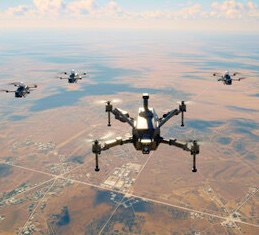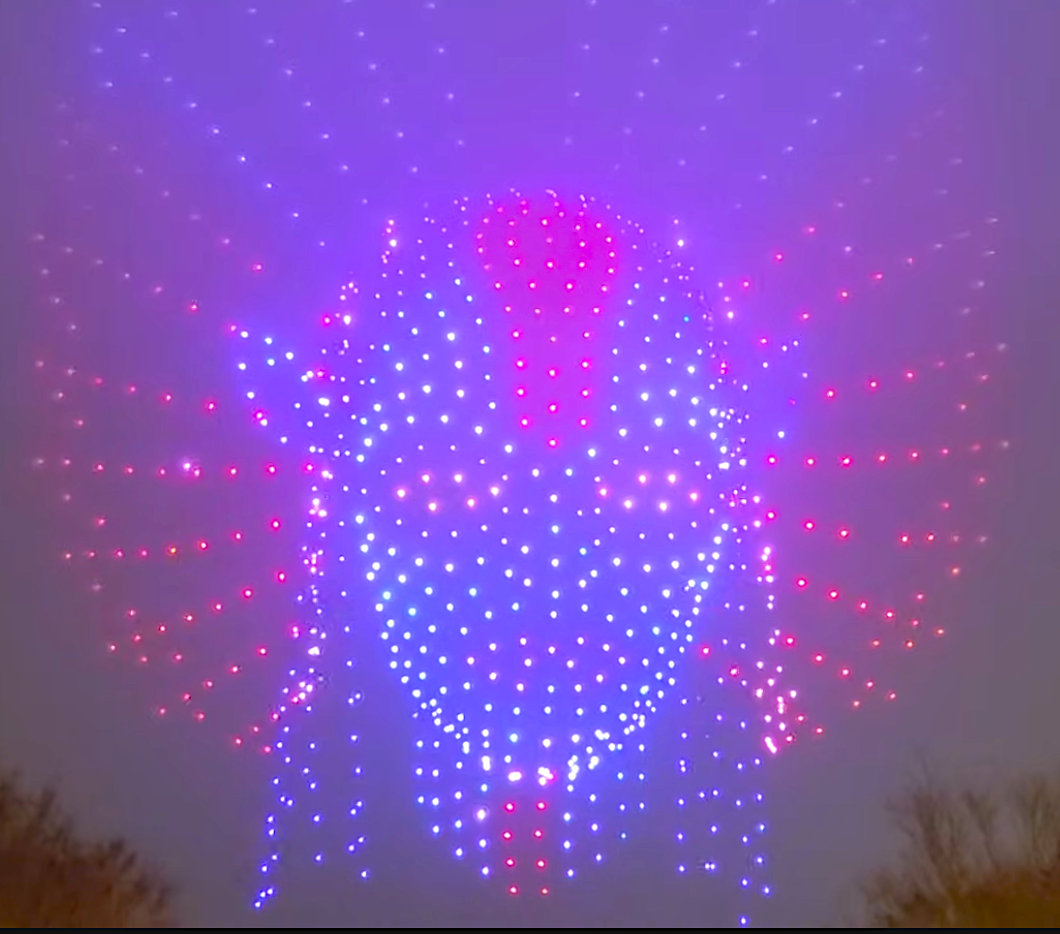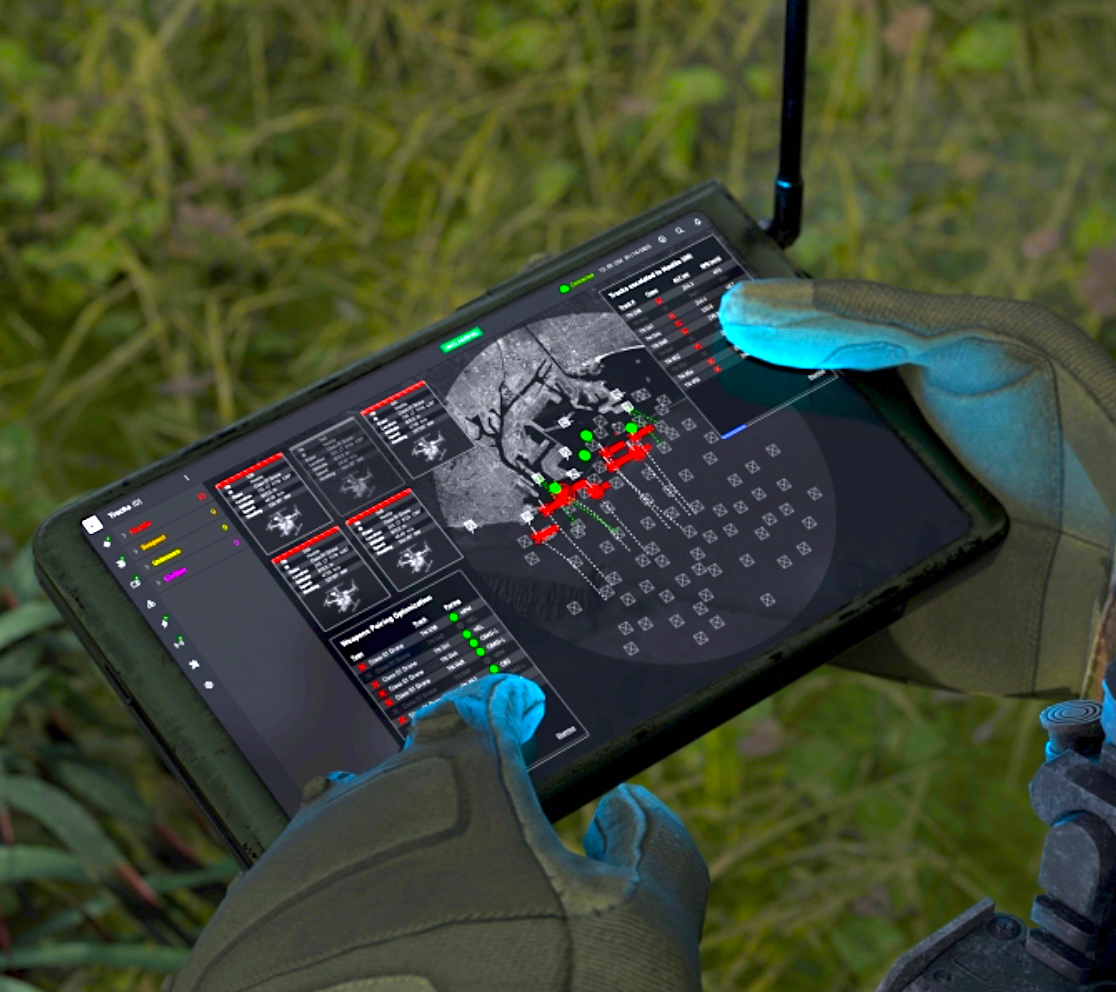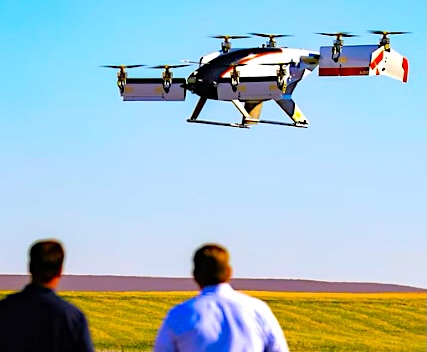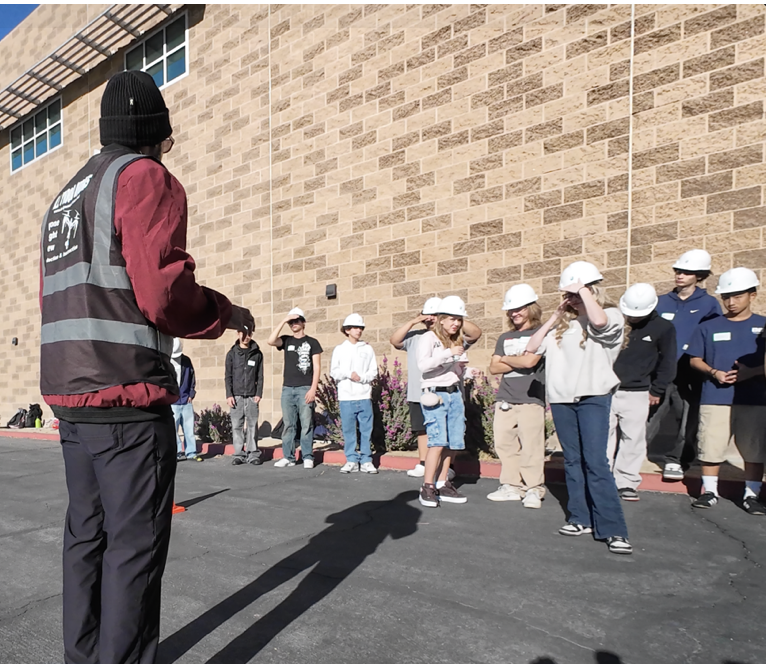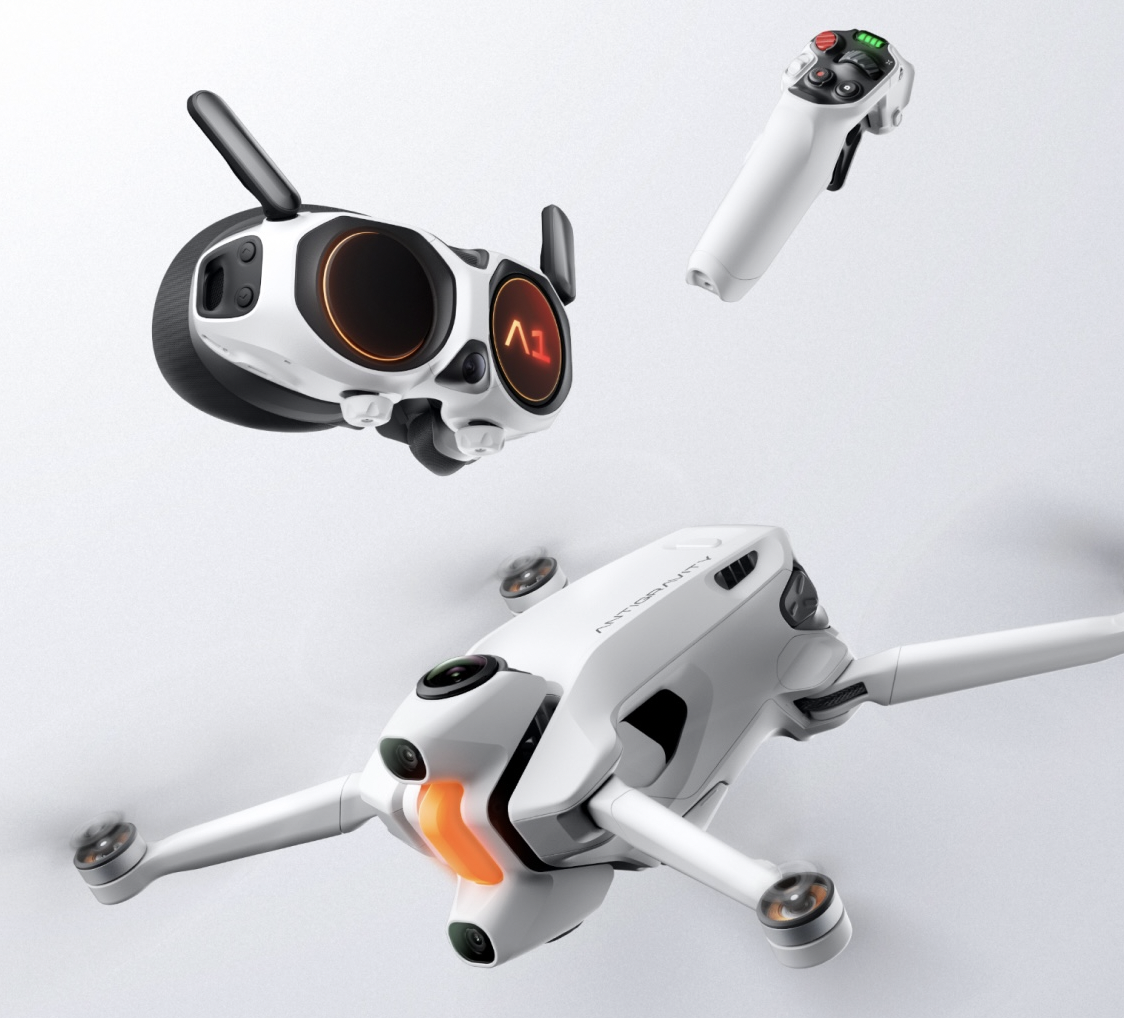Featured NewsTrending NewsTactical and Law EnforcementDRONERESPONDERS Public Safety Alliance
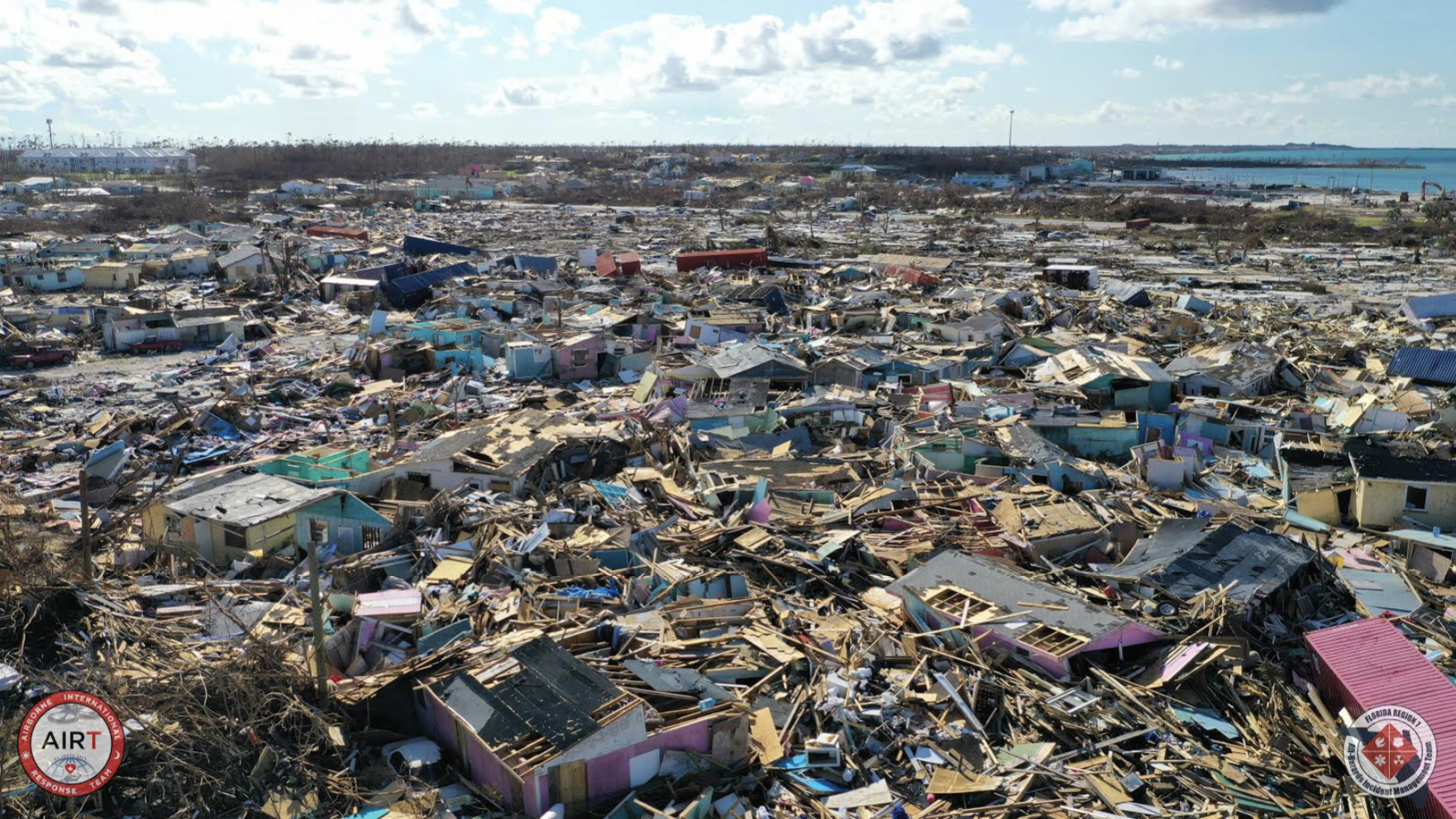
Above Photo: Hurricane Maria damage at Marsh Harbor, Puerto Rico [Courtesy C. Todd/AIRT].
12 December 2022
As Unmanned Aircraft Systems began to make a foothold in public safety, there were very few resources available to guide public safety departments through the procurement and implementation of a UAS program.
In April 2019, DRONERESPONDERS was launched as a nonprofit program under the umbrella of the Airborne International Response Team (AIRT, a 501C3 nonprofit organization). The first initiative was to create an online Resource Center to provide SOPs, best practices, lessons learned, checklists, risk assessments, Certificate of Authorization (COA) waiver guidance, and more.
Today, the DRONERESPONDERS online Resource Center is the largest repository in the world, and has more than 800 documents to provide guidance resources. The Resource Center is available to DRONERESPONDERS members and membership for all is free. The DRONERESPONDERS organization is built on inclusiveness and is open to all public safety, government, nongovernmental organizations, industry, and academia.
Watch!
DRONERESPONDERS conducted several public safety UAS research studies to better understand the state of public safety UAS. The studies provided insights to the number of remote pilots, the number of mission deployments and the types of public safety UAS use cases.
In 2020, research revealed there were 17 major use case categories of which many could be further broken down into four or five sub categories making the total of specific use cases to more than 50. The use cases spanned across all public safety disciplines of fire, law enforcement, emergency management, EMS, search and rescue, and hazmat. The studies also estimated there were more than 5000 public safety agencies in the U.S. that have implemented UAS programs with more agencies adding programs daily.
One of the earliest initiatives was to develop a Community Outreach Program Guide that could be customized and used by localities to conduct community outreach to facilitate transparency and community acceptance. This includes town hall meetings, sharing policies/procedures, and conducting demonstrations, and it is the most important step to launching a successful public safety UAS Program. As part of this process, it is critical to practice with policies and procedures that ensure the public trust.
DRONERESPONDERS partnered with Skydio to create the Five C’s.
- Community Engagement and Transparency
- Civil Liberties and Privacy Protection
- Common Operating Procedures
- Clear Oversight and Accountability
- Cybersecurity
In 2019, DRONERESPONDERS partnered with AUVSI and Commercial UAV Expo to provide annual national public safety UAS conferences in the United States to provide training content, and to expand networking opportunities across public safety agencies with UAS programs and for those interested in starting programs. DRONERESPONDERS helps to facilitate mentoring opportunities to match new UAS programs with more mature programs.
DRONERESPONDERS partnered with the National Institute of Standards and Technology (NIST) and received a grant to help expand the promotion and use of the NIST Standard Test Methods for Public Safety UAS. These standardized test methods include numerous test lanes both obstructed and unobstructed to be used to objectively evaluate remote pilot practical skill proficiency.
DRONERESPONDERS serves as an auditor to ensure the proper buildout of these test lanes for public safety agencies across the United States.
DRONERESPONDERS had several partnerships in 2022. First involved a three-year Space Act Agreement with NASA to collaborate on ways to ensure the safety of national airspace by reviewing COA’s and CONOPS to develop and share best practices, enhancing safety cases and exploring new safety concepts. The NASA collaboration also involves work on exploring new and larger UAS for wildfire operations.
Another partnership was with the Canada Emergency Responder Robotics Association (CERRA). This partnership encourages the sharing of information, collaboration between airspace regulators and pushing for advancement of public safety UAS programs across U.S. and Canadian borders.
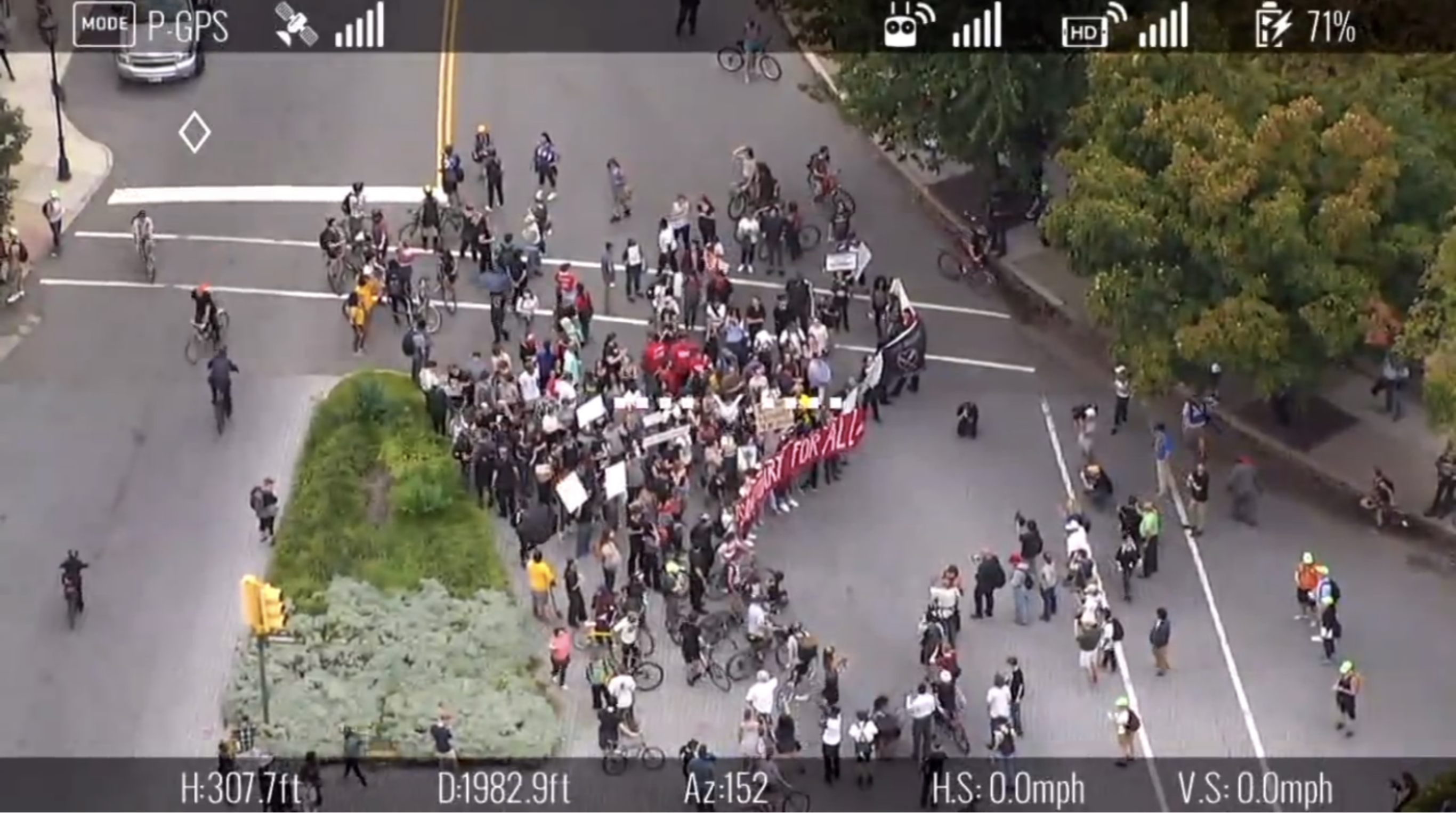
Civil War Statue Protest, Richmond Virginia [Photo courtesy York County VA Fire].
One of the major areas of confusion/frustration involves Federal Aviation Administration regulations. In 2020, DRONERESPONDERS began a free monthly webinar series with the FAA on the second Wednesday of each month at 4 pm EST, where the FAA can share regulatory information and answer questions directly from webinar participants. The purpose was to help provide more clarity on the various rules and regulations as it relates to public safety UAS operations. Generally, there are between 45 to 60 questions asked and promptly answered. This also serves as a listening opportunity where the FAA can get direct feedback on the wants and needs from public safety.
The relationship with the FAA has continued to be positive where DRONERESPONDERS, working with public safety agencies, helped in the development and approval of a tactical beyond visual line of sight (TBVLOS) waiver that allowed for the first time to fly dangerous missions (i.e. active shooter, hazmat, etc.) beyond visual line of sight, and removing the remote pilot from harm’s way. To date, more than 300 public safety agencies have approved TBVLOS waivers. Additionally, DRONERESPONDERS worked with the FAA to publish and distribute a step-by-step COA guide through the application process that was authored by Brandon Karr with FAA guidance.
Following the lead of the Chula Vista Police Department’s original Drone as a First Responder (DFR) Program, which launches a drone immediately at time of 911 dispatch to fly to and give eyes on the incident scene prior to arrival of responding ground units. This provides early and critical real-time situational awareness to the dispatchers and the responders. This serves as a force multiplier, and has become one of the best law enforcement de-escalation tools.
From this point, DRONERESPONDERS created a National DFR WG, that meets monthly to share department successes to further advance DFR programs. Presently, DRONERESPONDERS is working with the FAA to develop a DFR Guidance Template to more quickly approve DFR waivers.
In 2022, DRONERESPONDERS announced a partnership with UAS Norway to launch the DFR International Initiative to help propagate this program around the world.
DRONERESPONDERS research further identified the need for standardized training, and in 2022, partnered with MITRE to begin the development of the first public safety remote-pilot training-curriculum standard. To accomplish this, representatives from every public safety discipline across the U.S. have been assembled to guide this new training-curriculum standard. This standard will address the knowledge and practical skills necessary for basic indoor and outdoor UAS flight operations to establish a foundation on which to build additional and more advanced flight training curriculum standards.
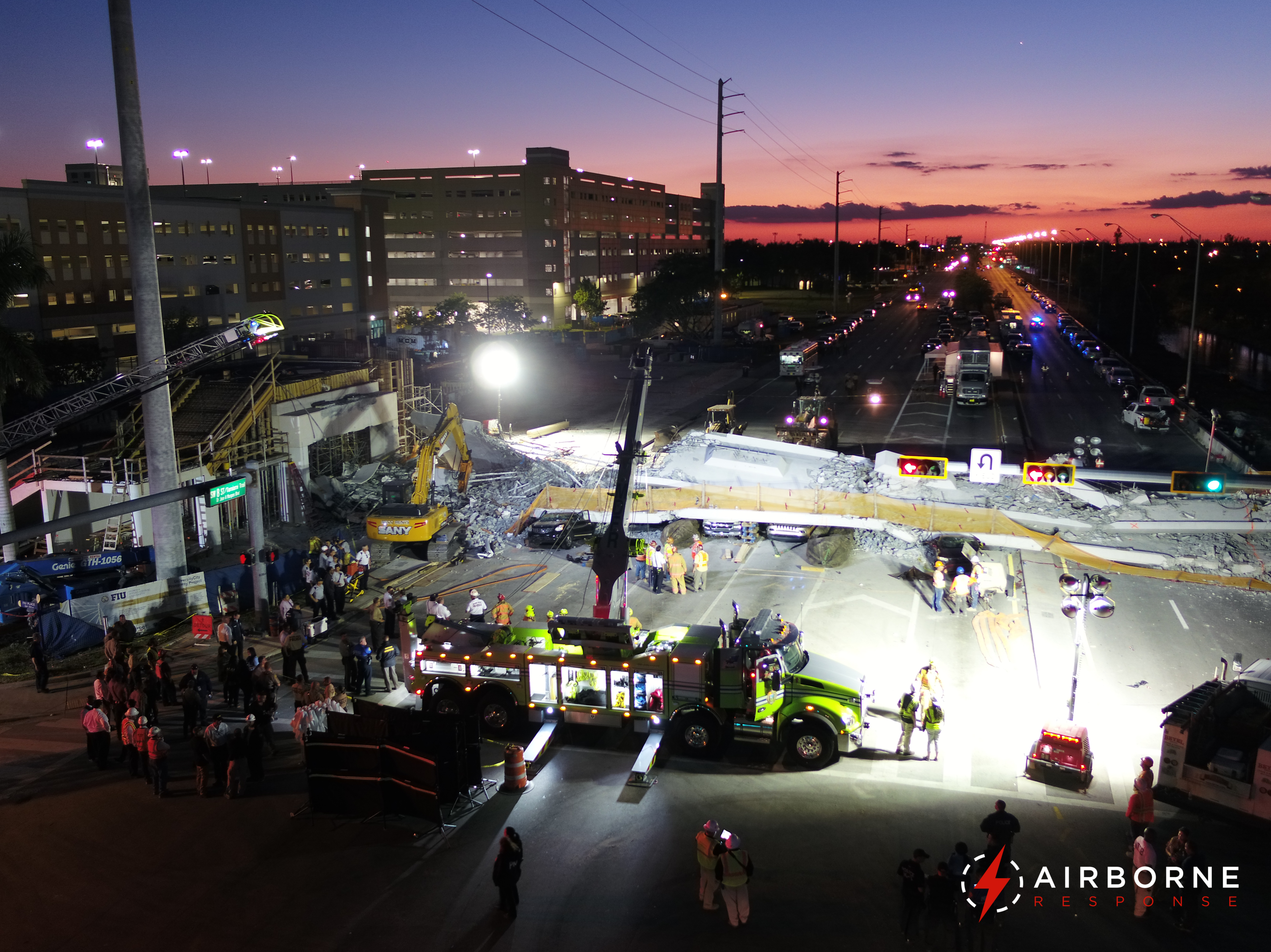
Florida International University Bridge Collapse [Photo ccourtesy C. Todd/AIRT].
Another way to increase adoption was through the development of a Global Public Safety Drone Directory/Dashboard which was accomplished through a partnership with the NASA AMES Research Institute and ESRI. This directory/dashboard now has more than 1200 public safety agencies listed and sharing their UAS program information such as start date, number of remote pilots, type aircraft, mission types and more. It also serves as a way to facilitate cooperative networking and training.
The interest in DRONERESPONDERS began to grow and currently there is the beginning of State branches to further expand the organization’s efforts through expanded reach at the state, local and tribal levels. The first state branch of DRONERESPONDERS started in Florida, and is successfully sharing information between programs, networking, and conducting regional training. Other states have expressed interest and discussions are underway.
The healthy balance of the UAS ecosystem involves three different areas of interest—enabling drones for good, countering bad actors with drones, and air traffic management.
DRONERESPONDERS is actively working in each of these areas to ensure public safety participation and representation. It has just launched a Counter UAS WG and is actively involved in air traffic management discussions.
Today, DRONERESPONDERS has grown to more than 7000 members, participation from 85 countries and 400+ international members, over 1700 LinkedIn followers. It has also organized the following working groups: National DFR WG, Major Cities WG, Women in Public Safety WG, UAS Program Manager WG and Counter UAS WG.
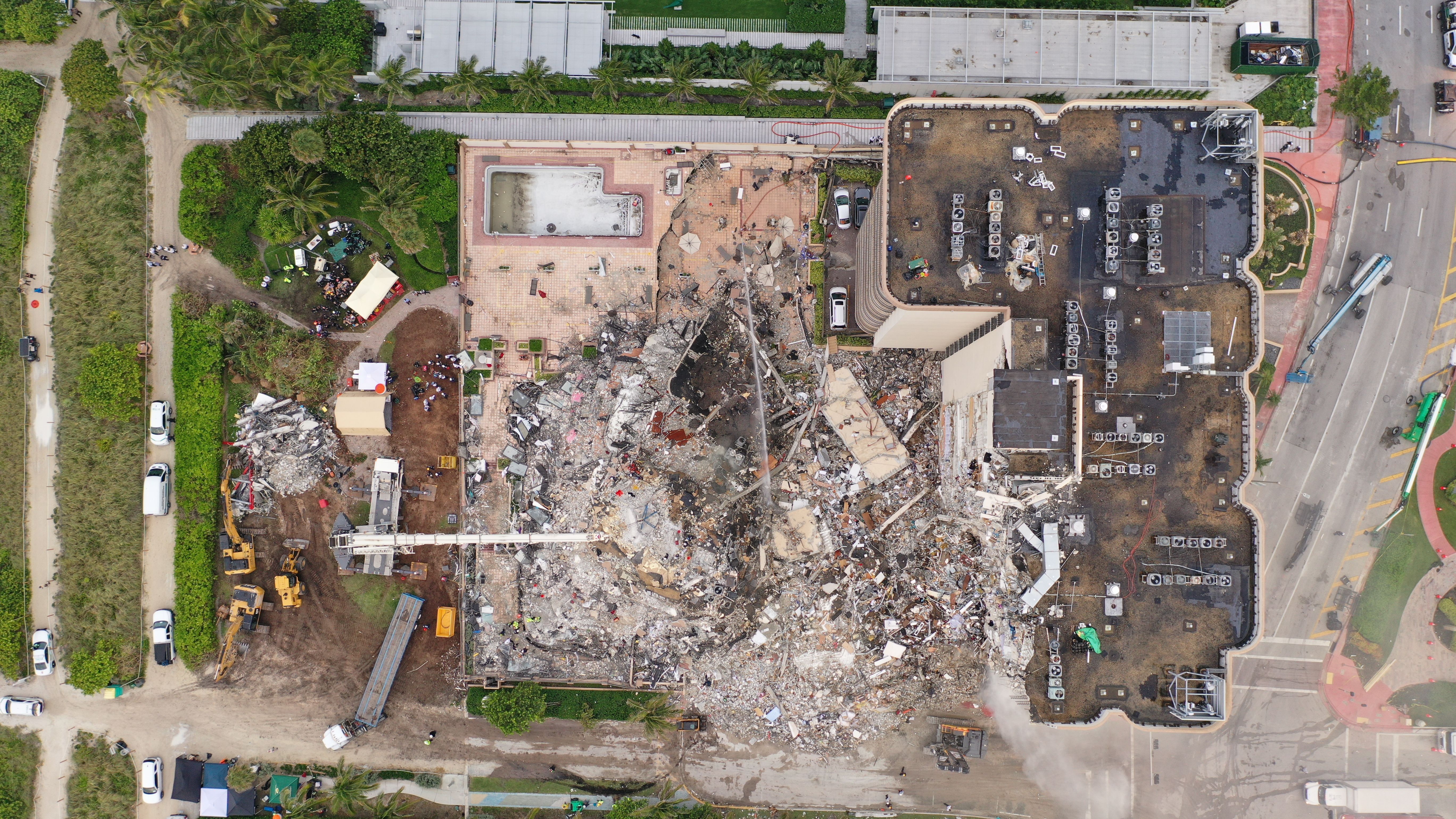
Miami Surfside Condominium Collapse [Photo courtesy C. Todd/AIRT].
Lastly, UAS is evolving into package delivery and Advanced Air Mobility. Each of these have an impact on public safety. Package delivery may be for immediate delivery of Narcan to reverse opioid overdoses, defibrillators, transporting organs, delivering blood and delivery of medications/vaccines to underserved communities. Advanced Air Mobility provides the introduction of air ambulances, larger wildfire firefighting drones and much more AND DRONERESPONDERS will be actively engaged through this exciting journey.
DRONERESPONDERS work was recognized in 2020 by AUVSI as the First Place Public Safety Excellence work and in 2022 by American Security Today ASTOR’s Homeland Security Excellence Award.


